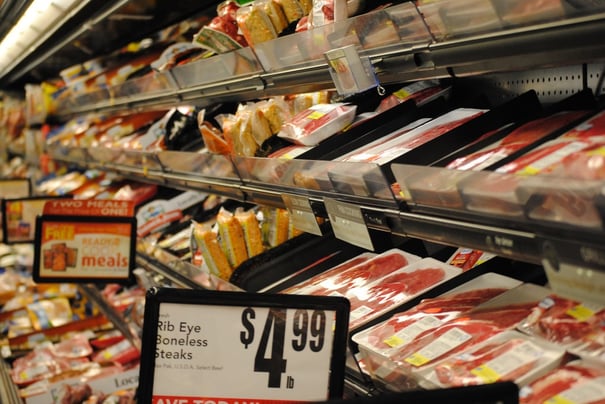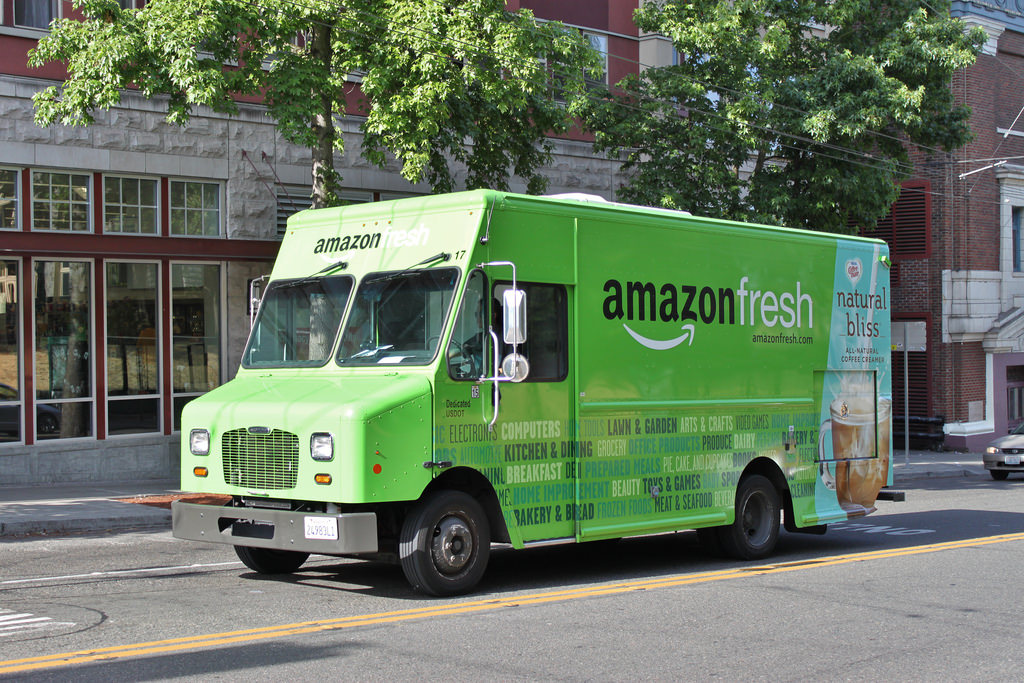Well, it looks like their secret is out: Amazon is entering the brick and mortar grocery business, starting with a Seattle-area drive up location and with designs on setting roots in the Bay Area as well. They have been tightlipped about the project—secretly dubbed Project Como within the company—but according to recent leaks and public documents, the store appears to be a hybrid of cutting-edge technology and the traditional grocery experience. The Seattle location may be open within the next few weeks.
Project Como Coming to Life
According to permit documents, the Amazon grocery store will be a drive-up market stocked only with fresh items such as produce, dairy, and meats, and is expected to be open from 7:00 AM to 10:00 PM, with one-quarter of traffic expected between 5:00 PM and 7:30 PM. They plan on having roughly fifteen employees on site and aspire to keep wait times below five minutes.
But how will it operate? One of two ways. Customers will be given the option to preorder their groceries and schedule a pick up window, at which time they can then park in an area adjacent to the building where license-plate-reading technology will alert staff of their arrival. This is, essentially, the same click-and-collect model that has gained traction in Western Europe, with some added Amazonian flare.
Alternately, customers can also pop in to the store as though it were a typical supermarket, perusing and purchasing their fresh food selections. There, in-store kiosks will also give them the opportunity to order delivery for shelf-stable items not on-site like peanut butter and jelly.
Regardless of which option they choose, Amazon is obviously trying to streamline the grocery experience, making it more efficient and also more dependent on Amazon’s distribution network and technology.
Trying to Divert the Amazon
Some fear their click-and-collect model could create a serious traffic problem, especially when metropolitan streets are small and crowded during rush hour. One solution: there will be a finite amount of peak time appointments, meaning that pickup windows essentially sell out, prompting the customer to choose a less congested hour.

Yet some remain unconvinced and Amazon has already faced some opposition in the earliest parts of these endeavors. Their proposed brick and mortar location in San Carlos, California—just south of San Mateo on the San Francisco Peninsula—was resoundingly rejected by its mayor who balked at increased traffic caused by customers and deliveries, quipping, “This business is not designed to serve San Carlos residents.” But Amazon did not become Amazon by backing down easily and they seem intent on expanding into grocery—if not in San Carlos, then somewhere else.
Sharing the Market
As it currently stands, Walmart has a whopping 17.3 percent of the US grocery market, a market Amazon desperately wants to flood for the simple fact that groceries account for 1/5 of consumer spending. Only 2% of that spending currently happens online, meaning Amazon’s traditional distribution methods will not reach a vast majority of potential shoppers. Even if that number doubles over the next year, and even though Amazon already accounts for more than 50% of online grocery purchases in markets where it competes, it’s still not enough to shift the grocery industry’s balance of power. And thus the brick and mortar expansion. As one analyst observed, “They understand that they’re not going to have a single platform that builds this thing out. They are going to penetrate half a dozen or more ways. They’re going to sell stuff every way they can.”
But encroachment goes both ways and just as Amazon is trespassing into firm legacy grocery territory, so too do they move into Amazon’s sphere of influence. As Eric Healey of MyWebGrocer notes, “Brick and mortar grocers can still maintain the upper hand when capable of embracing a sound, multi-channel strategy.” Yet the knowledge and technology to develop that strategy may be difficult to roll out in a timely fashion, particularly with Amazon currently pressing its advantage so aggressively.
So for the time being, it is a race to the middle with two questions still up in the air: will Amazon be able to construct the physical before supermarkets can build the digital? And what will Walmart, perhaps closer than any other to a true omni-channel grocery experience, have to say about it?


